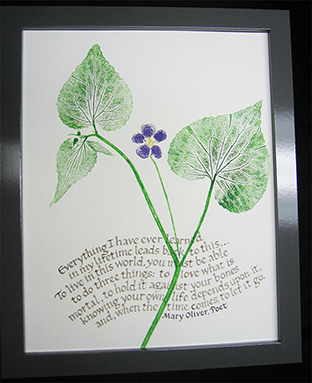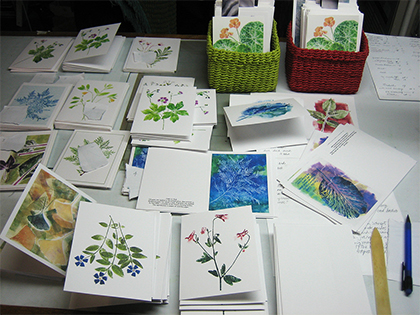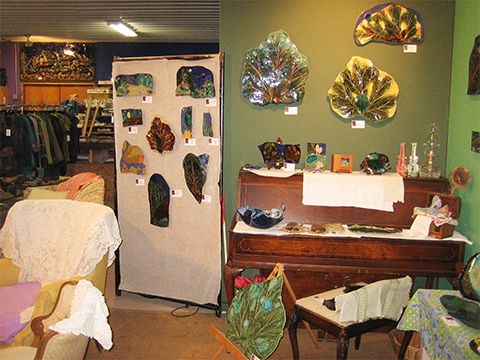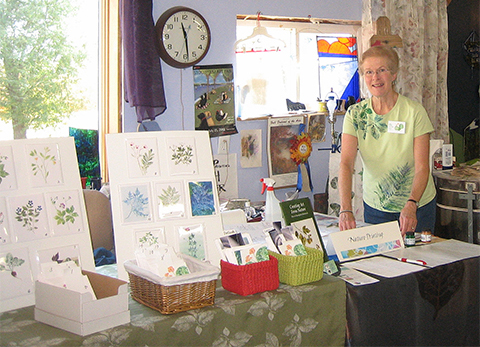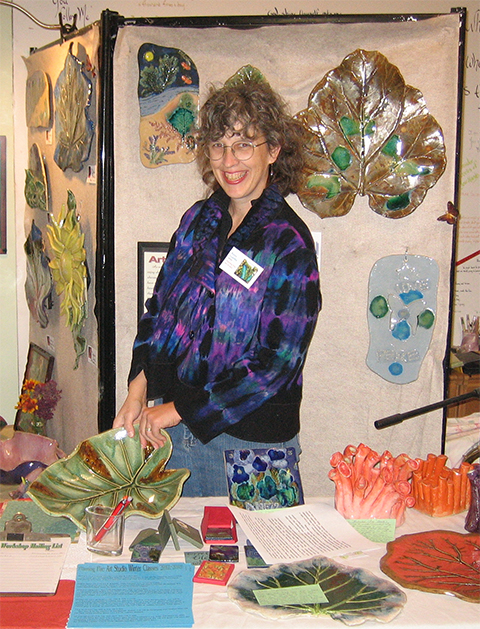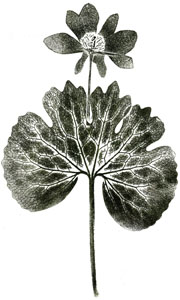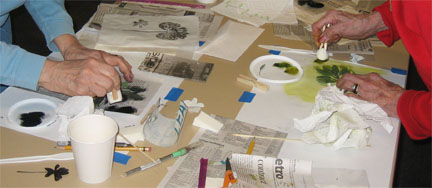Combining lettering with nature printing
Recently my friend, Dee, called to ask if I would letter a quote she wanted to give to her dear friend, Mary, who was dealing with three types of cancer, one of which was in stage four. The quote, by poet Mary Oliver, was a favorite of Dee’s friend. I thanked Dee for her offer to pay me but decided to letter the quote as my support for Mary.
When I became consumed by nature printing in 2002, practicing lettering—along with weeding gardens, mending clothes, and countless other activities—weren’t priorities anymore. So, I was concerned about doing this lettering, but after absorbing the encouraging perspective from the book Brave Intuitive Painting, I cast aside my doubts and dove into the project with joy. My plan was to combine the Mary Oliver quote with a nature print.
Step one was to type the quote into phrases so I could judge its length and shape. Then, after digging into my stash of nature prints, I found a print of a violet. The composition seemed weak, particularly because the stem was perpendicular to the bottom of the paper. “Artistic license” on my part had created another flaw: the leaves and flower belonged to a white violet—Viola canadensis—but I had printed the flower with purple oil paint, knowing a white flower wouldn’t be noticeable on white paper. Hoping Dee’s friend wasn’t a native plant specialist, I carried on.
I photocopied the print of the violet, tilted the page so the violet’s stem was at an angle, and practiced lettering near the image. The style, size, color, and movement of the lettering varied with each subsequent practice page as did the relationship of the lettering to the violet. Surprisingly, lettering done slowly-but-happily with a soft pencil proved to be the guide for the final lettering.
With the pencil layout placed on a light box (underneath the violet print), I diluted some walnut ink, loaded a Platignum fountain pen, took a deep breath, and began lettering. The thought of my friend, Dee, honoring her friend, Mary, accompanied me as I created each letter of the quote. While I was “in the groove,” I placed the pencil layout beneath another violet print, and lettered the quote for Dee. I was honored she’d asked for my help, and as is usually the case when helping someone, I received more than anyone by learning of a meaningful quote, being reminded of my affection for lettering, and having a story to share with you.
